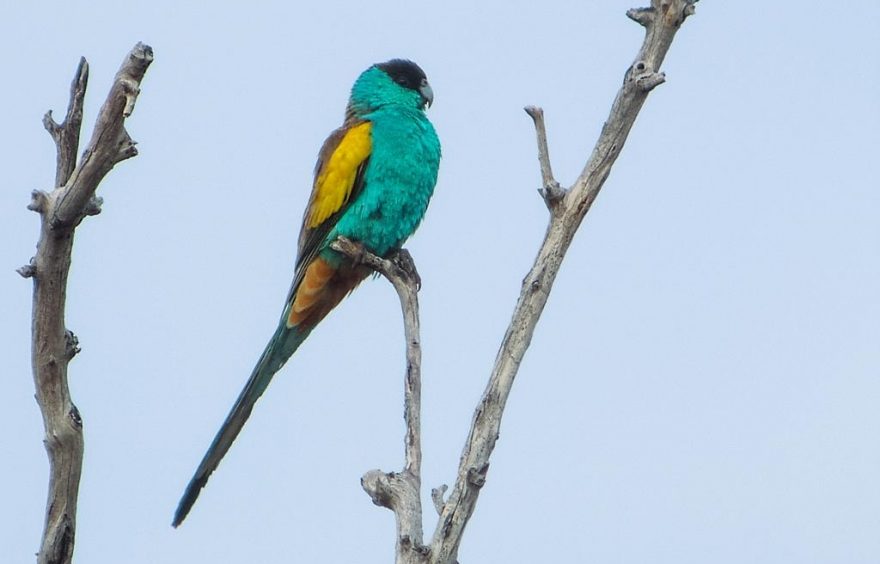The hooded parrot is a medium-sized parrot found in Australia’s Northern Territory. It lives in savannah and open woodland and is one of only two species of parrot (along with the golden-shouldered parrot) that breeds in termite mounds. It is uncommon in aviculture, partly due to its sometimes aggressive nature which makes it unsuitable for mixed collections.

Housing & Compatibility
Hooded parrots are somewhat aggressive birds that should only housed as single breeding pairs. Double wiring between adjacent aviaries is essential. Particularly aggressive pairs housed next to each other may need to be separated by a solid wall to control territorial behavior.
Hooded parrots should be provided with an adequate amount of flying space to ensure they receive sufficient exercise. Birds that do not have room to fly may suffer from stress or obesity. They require a minimum of two meters of uninterrupted flying space.
Branches from non-toxic trees should be provided as natural perches. The birds will also enjoy chewing on bark, leaves and seeds for entertainment and beak exercise. Hooded parrots generally will not damage timber aviary frames.
To avoid producing hybrid birds that damage the limited captive gene pool of each distinct species, the hooded parrot must not be housed with the golden-shouldered parrot.
Diet & Feeding
Seed forms the basis of the hooded parrot’s diet. A quality mix designed for small parrots or lovebirds will be acceptable. Hooded parrots also require a wide variety of fruit and vegetables to ensure good health. Leafy greens such as kale, endive, and silverbeet should also be offered.
Pellets can be offered as a more nutritious alternative to seed, however many birds are unwilling to consume them.
Hooded parrots particularly enjoy eating flowers and seed pods from native trees, especially those in the eucalyptus family.
Breeding
Hooded parrots will breed in spring and autumn, typically raising one clutch in each breeding season. Each clutch will contain between 3 and six eggs.
Despite breeding in termite mounds in the wild, captive hooded parrots have adapted to use medium-sized commercial nesting boxes or hollow logs lined with sawdust. Some breeders prefer to better emulate their natural breeding sites by added a tunnel to the opening of the nest box, and lining it with clay and sand.
Originating from Australia’s warm tropics, hooded parrots are poorly suited to breeding in the cooler climates found in Australia’s southern states, or in North America and Europe. It may be necessary to insulate the aviary or heat the nest box to improve breeding success in colder months.
Incubation is performed exclusively by the hen and lasts for roughly three weeks. Young birds will fledge at 4-5 weeks of age and become fully independent from their parents 2-3 weeks later. Young birds should be separated from their parents when they reach maturity to avoid aggression from a parent.
Sexing
Easy to visually sex, with only males possessing the vivid turquoise chest. Females are much duller in colour. Juveniles of both sexes resemble the female until they reach maturity.
Mutations
Many mutations have been observed, although only a handful have been properly established in aviculture. Yellow, fawn, olive, and blue (in descending order of rarity) can often be purchased through dealers and specialist breeders.
Health
A strict worm control regime and regular preventative treatment for bacterial and fungal infections is critical to ensure the long-term health of any bird.
A well cared for hooded parrot will live for 15-20 years.